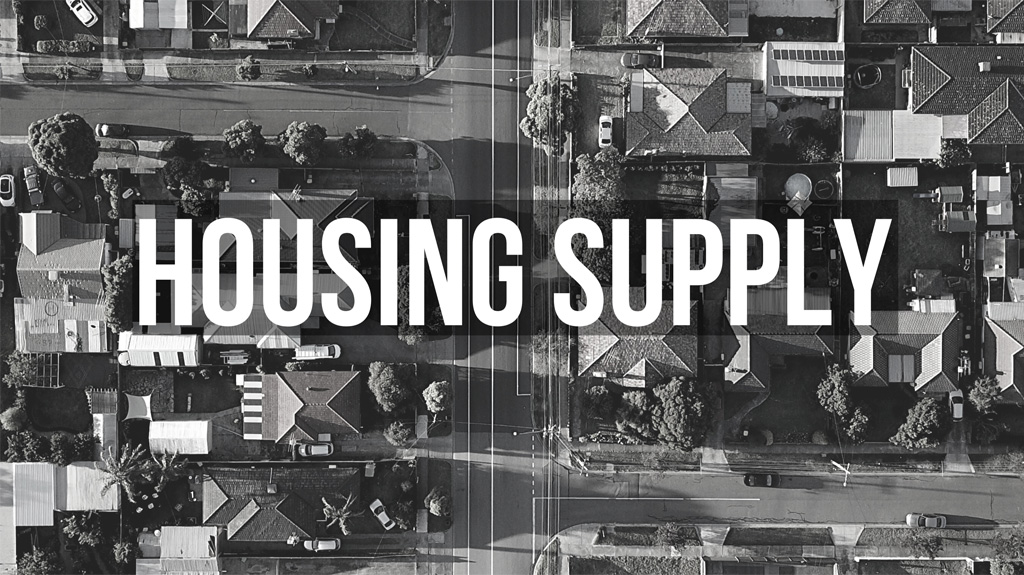Has The Toronto Bubble Finally, Popped?

Was January a harbinger of things to come? To say that last month, the Toronto real estate market conditions were exceptionally tight, would be an understatement. The tight market conditions experienced in January were spurned by severe supply constraints. That said, we expect no real significant signs of abating through 2020.
For over a decade now, Fox Marin has been talking about the issue of housing supply. With this comes the potential long-term consequences of effective government policy failure on all levels to address the issue. As predicted, the inability to acknowledge and address the supply issue has become the number one contributing factor to a long-term housing affordability crisis in the GTA.
Policymakers and governments have attempted to address housing affordability by curtailing demand through taxation and restrictive lending and zoning policies.
These short-sighted actions have only managed to punt the football down the field instead of addressing the fundamental issue. This is much like the U.S. Government raising the debt ceiling as opposed to tackling spending and staggering debt levels. You can only ignore a growing problem for so long until it becomes a crisis. Looking to understand what lies ahead for the Toronto real estate market in 2020 and beyond? Let’s look at what happened in January.

To note, this is the highest annual rate of growth for the benchmark since November 2017 when the OFSI announced the B-20 stress test. Anticipating the new lending rules, buyers raced to acquire before having to qualify 200 basis points above the posted rate.
What we saw in January 2020 is reflective of a market operating under extreme tightening market conditions, causing prices to surge.
Most economists, market pundits, and the mass media tend to overcomplicate things to serve their agendas. But, understanding the Toronto real estate market is not that complex. In fact, it is Economics 101: Supply Versus Demand.
[Source: Toronto Multiple Listing Service; January 2020 Market Watch Report]

Housing supply has not kept up with the GTA’s rapid population growth or its continued economic expansion. In addition to the Greenbelt, antiquated and restrictive zoning regulations and government red tape on new development have put a decades long squeeze on bringing new inventory online. From 2016 to 2019, 325,000 jobs were created in the GTA, and the population grew by approximately the same amount. Over this period, the GTA only produced 100,000 new homes, whereby less than 2% of which were deemed affordable. There is a fundamental problem with these numbers. With 100,000 plus people immigrating to the GTA annually and the average household comprising of 2.1 people, the GTA needs to be creating closer to 50,000 new housing units per year. We are falling short of these numbers, landing closer to 36,000 new housing units annually. It’s simple math.
We desperately need more turnover of existing inventory, and we not there, not even close.
Primarily due to debacles in government policy, homeowners are increasingly choosing to stay put. Given the dramatic price increases in residential homes over the last decade, economic theory points to more existing inventory coming online as homeowners choose to take advantage of their equity and move up the property ladder. However, the City of Toronto’s Municipal Land Transfer Tax has prompted many homeowners to reconsider their options. Rather than leverage their built-in equity to sell their home and move up the food chain, they are choosing to renovate or refinance. Refinancing gives some homeowners the opportunity to purchase a small investment property and diversify. The punitive costs of the double Land Transfer Tax are forcing many Torontonians to stay put as the costs of moving onwards and upwards have become cost-prohibitive when considering taxes, realtor fees and legal.
Note, the Landlord Transfer Taxes to purchase a $1.8M home in Toronto is $65,000; funds that cannot be wrapped into a mortgage.
When the OFSI Stress Test came into effect in 2018, it forced all mortgage borrowers to qualify at 2 percentage points above the posted rated. In one fell swoop, it reduced affordability by as much as 20% for anyone applying for a conventional mortgage. The stress test has prohibited many households from listing their homes for sale to acquire another because they may not simply qualify under the new governances.
Toronto’s Land Transfer Taxes and the OFSI Stress Test, unless abolished or augmented, will have a significant impact on the long-term supply of existing inventory coming to the Toronto Real Estate Market.
The intention for the stress test and double land transfer was to constrain demand. While initially successful, once the shock wore off, demand adjusted and at the expense of curtailing supply in the long-term. In a statement put out by the Toronto Regional Real Estate Board, Jason Mercer, Director of Market Analysis, succinctly wrote, “The key issue … [in 2020] will be the persistent shortage of listings. Without relief on the housing supply front, the pace of price growth will continue to ramp up. Policymakers need to understand that demand-side initiatives on their own will only have a temporary impact on the market.”

The Province of Ontario projects that by 2030 the GTA’s population with reach over eight million people. To compare, New York and London’s populations are presently sitting at around 8.7 million inhabitants respectively. According to the Province of Ontario, the GTA could surpass ten million people by 2045. With this in mind, we have a deep housing crisis in the GTA. And, it’s only going to compound over time as the population and economy continue to expand. It’s a cliché that the definition of insanity is doing the same thing over and over, expecting a different result. Still, when related to the GTA housing market, it is very relevant. If we are going to create more affordable housing or any real housing supply at all for that matter, it will require a dramatically different collective approach.
The City of Toronto’s legalization of laneway housing is an excellent start to put on us on the right track. However, the GTA is in dire need of more creative policies and on a much grander scale.
Frank Clayton, a Senior Research Fellow in Urban Research and Land Development at Ryerson, recently spoke to this. He proposed, rather than the Government spending $500,000 to build one affordable housing apartment that will not be built for four years, what if the Government incentivized homeowners? Instead, incentivize living in central neighbourhoods by offering $25,000 for creating a secondary suite and fast-tracking the approval process. The cost to Government would be at a fraction and impact would be almost immediate, where it’s needed most.

In a written report by Mr. Clayton, The Missing Middle, he classifies “the middle” as a unit type that falls between a single or semi-detached house. This includes townhouses, stacked townhouses, duplexes, triplexes and laneway homes. These types of properties offer a more affordable entry point into more established areas. According to Clayton, there is a severe undersupply in these types of properties. “The primary goal of significantly enhancing the supply of missing middle housing in Toronto is to provide more affordable, family-friendly housing given the stratospheric prices of single-detached and semi-detached houses.” However, in order for this to happen, there would have to be a dramatic shift on a grassroots level towards allowing for more intensification in our city’s neighbourhoods.
The official City of Toronto land-use plan was written and designed to protect neighbourhoods and homeowners from over-densification. Local politicians are focused obsessively over protecting the rights of their constituents as laid out under current guidelines. Rightly or wrongly, most homeowners in Toronto’s established neighbourhoods perceive a proposed increase in density as a threat to their quality of life and property values. Politicians will fight increased densification even if it’s in direct conflict with the best interest of the city or region. To do so could be political suicide. Very few municipal or provincial politicians want to take on local “Nimby ” activist constituents (not in my back yard) and risk their careers for the sake of the greater good.
While clearly there are solutions and new approaches to address the supply side of the equation, the question is, will we ever implement such strategies, and if so, will it be too little too late? Based on the behaviour of municipal, provincial and federal governments over the last two decades, it will most likely be the latter.

All key indicators for 2020 show that consumer confidence and acquisition in the Toronto real estate market will continue to be very strong:
At the end of 2019, it was clear that the temporary effects of Government policy appear to have worn off. And, buyers have adjusted accordingly. A recent IPSOS survey indicated that intending buyers have adjusted their price point, location and asset class, and are no longer concerned about its [OFSI] potential overall impact on the market. The same survey also calls for an uptick in first-time buyers. This will cause added pressures to the already tight condo market. All this at a time when the U.S. economy is roaring, speculation regarding an impending rescission is subsiding, and the fears of a possible trade war with China have been abated: at least for now.
Based on current market conditions, Fox Marin forecasts a hefty 12-15% overall price increase in central and downtown Toronto this year; price appreciation will be led by the low rise segment, more specifically detached homes.
The resale condo market will remain strong in its wake. We expect to see big numbers in the condo pre-construction market as investor confidence will be buoyed by the overall performance of the resale market. Look for the rental market to take a breather at $4.00 per square foot. There will be a short-lived blip in rental inventory coming online. This will take time absorb before prices begin to climb once again.
Over the long-term (3-5 years), prices could rise by as much 30- 40% as Toronto begins to take its rightful place amongst the world’s elite megacities.
Overtime, us humble Torontonians will learn to accept this as a fact of everyday life. Every major world-class city has had its renaissance period. It’s now Toronto’s turn. Prices of our real estate over the long-term will continue to rise. Affordability will continue to be a dominant issue. The question? Can policymakers focus on taking action to open up supply in a meaningful way? This remains to be seen, but I wouldn’t hold my breath.
—
This article is written by Ralph Fox, Broker of Record and Managing Partner here at Fox Marin Associates. Ralph is a Torontonian native who recognized from an early age that the most successful people in life apply long-term thinking to their investments, relationships, and life goals. It’s this philosophy, along with his lifelong entrepreneurial drive and exceptional business instincts that help to establish Ralph as a top agent in the real estate market in downtown Toronto.